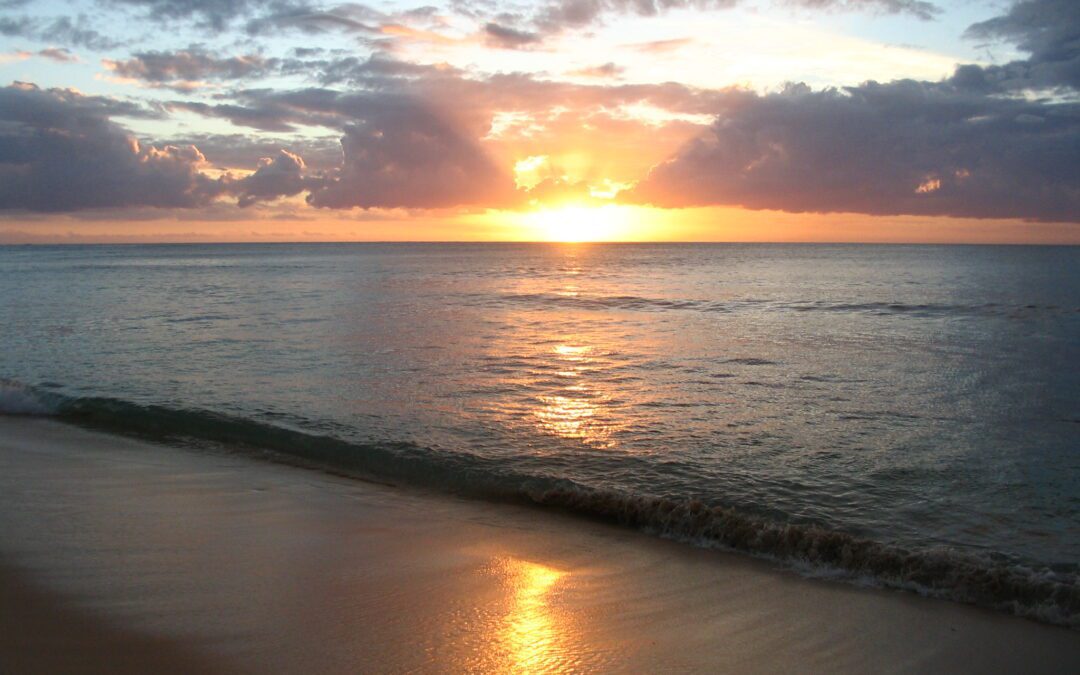During my semester abroad in Australia, I was lucky enough to take a spring break trip to Fiji. “Bula!” I stepped off the plane to the sounds of a steel drum and the caress of a tropical breeze. Greeters waited in the airport lobby with shell necklaces and sunny smiles to welcome newcomers to this tropical paradise. I was in Fiji! The island of Viti Levu will forever conjure up images of paradise in my mind’s eye.
I spent nine days exploring the island while on board the Fee Jee Experience tour bus. The tour was fantastic: a leisurely loop around the island, complete with sandy picnics, jungle hikes, river rafting, and village visits. The trip flew by too quickly, and I was sad to have it come to an end. The penultimate night of the Fee Jee Experience took our group into the heart of the island to visit the mud pits in an enterprising farmer’s sugarcane fields. The bus plowed down the farmer’s driveway and parked us sunburnt and sweating tourists right in his front yard.
Our tour guide, Didi, was one of those women whose age is impossible to guess. She must have been over fifty years old, but her hyperactivity, youthful giggle, buttery skin, and spry figure made it hard to say. She got the group pumped up for these mud pits, singing their praises as the Fijian fountain of youth. She took a dip in the silky soil once a week as part of the tour, perhaps contributing to her age-defying complexion.
As we picked our way through the sugar cane, the farmer’s children sneaking peeks and giggling at all of us tomato-skinned tourists, I had my doubts. This smacked of a gimmick, trying to help a local out by bringing in some foreign currency. We came to the first mud pit, and it was just that—a sloppily circular hole in the earth filled with muddy water. The first brave tourists got in and immediately sunk to their waists in the murky bottom. Didi instructed everyone to join them and to slather themselves with the mud from the bottom of the pool. We all quickly followed, flinging mud at one another, passing along mud massages and facials. We became the Fijian version of the Swamp Thing while connecting with our inner 3-year-old selves!
After we were thoroughly coated in mud, Didi had us all climb out of that pool and head across the field to another, clearer pool with mist lightly rising from its surface. Following our exotic mud bath, we got to cleanse ourselves in a natural hot spring! Fortunately, the sun had recently set, and the night was cooling off, so the steaming water felt delicious. Gently splashing and lounging in the purifying waters, I felt reborn. And gimmick or not, my skin felt as smooth as a baby’s cheek after that Fijian mud was rinsed off.
However, the most amazing part of this night was yet to come. After toweling off and reluctantly climbing back onto the tour bus, we headed off to our last hostel of the tour. I was in such a state of bliss and contentedness that I could hardly feel sad that the trip was almost over. I needn’t have worried. Less than half the distance back to the main road, the tour bus broke down. Now, this was the second time that this had happened—the first instance came about from an intriguing case of sabotage after the bus driver, during a moment of clarity while partying hard with the group the night before, had destroyed the engine in a selfless act of group preservation. That bus driver was no longer with us, and his replacement insisted that this bus had died from natural causes.
No one panicked or worried as we filed out of the bus to wait at the side of the road. “Road” may not be the right word; it was more like two tire-wide lanes of dirt parting the grass for the sole purpose of bringing tour buses to the mud pits and the farmer to market. We all climbed up the small embankment and made ourselves comfortable, lying among stalks of sugarcane. The stars were sparkling in a velvety black sky in an exhibit that would have rivaled any jewelry store display case. As I gazed overhead and enjoyed the scent of warm earth in my nose and the caressing breeze on my baby-soft skin, I heard a gentle sound in the distance.
Sitting up, I saw a fire-lit hut in the field across the lane. Through the open doorway, I could see at least three generations of family sitting around one of the younger sons, who held a drum in his lap. They were singing. On a Saturday evening, Grandmother, Mother and Father, teenagers, and baby were all gathered, happily singing a sweet, tropical melody.
My heart about melted right then.
This family spending their free evening together, hanging out and singing, was the most vivid picture of community I had ever seen. I was not so naive to think that this family co-existed in perfect peace all the time, but in that moment, they were tranquility defined. They were the perfect image of heaven to me.
When I sit still and spend time with those I love, paying attention to the moment, singing songs on a warm summer evening, or talking in front of the fireplace while snow buries the front yard, I am filled with peace and joy. I think living close to the natural world and apart from technology, as I saw firsthand in Fiji, has a way of bringing people together. Part of the fun of my childhood camping trips was being off the grid, away from TVs and phones and computers. With all the distractions at bay, we were forced into the present moment. Living in the present is a gift that nature continues to teach me as I learn to manage the random trials and tribulations of life.
If I am stressed at work, flustered by a patient who is not progressing as I had hoped, and I remember to breathe and connect to the present moment, I feel an instant wave of relief. My perspective is expanded, and I am reminded of the big picture of things. Then my brain is better able to think critically and creatively since it is not bogged down with thoughts of inadequacy and feelings of frustration.
If I am caught in traffic and rushing to get home so I can unwind and relax, I naturally find myself changing lanes and unsuccessfully trying to beat the crowd (I did learn to drive in Chicago). Occasionally on those days, a sound, a smell, or a sunbeam grounds my thoughts into now. I feel the tension in my shoulders dissipate as I slow down and look at all the others on the road as fellow humans who are also eager to get home to their families. And I relax and listen to a podcast or find a good song on the radio or turn it off and sometimes even enjoy the extra time to myself to think.
If I am caught in an anxious mindset about my spiritual upheaval and the ripples it’s causing in my family, and I stop and watch my kids play or get outside and get into my body, I experience a calm shift in perspective. This way I’m able to shelve my divine worries and eternal concerns and enjoy the present moment with intention.
Throughout my life nature has patiently and gradually taught me mindfulness. Time slowed down when I eagerly watched the skies for lightning during a Midwestern thunderstorm. My thoughts quieted while I sat at the beach and watched the sunset over the water during my summers as a lifeguard. I appreciated the present moment with my whole body when I savored the feeling of the sun on my skin and the wind in my hair. Watching the light dance over the unbelievably teal surface of a glacial lake in Montana made me speechless with awe. My easily distracted brain focused when I followed the joyful and erratic path of a butterfly through my backyard.
This article is adapted from Giving Up God: Resurrecting a Spirituality of Love and Wonder by Sarah Henn Hayward.

Sarah Henn Hayward is a writer, a voracious reader, a deep thinker, a curious learner, a nature lover, a brave adventurer, an Enneagram 7, a former Christian, a doctor of physical therapy, and a loyal friend. Her blog at sarahhennhayward.com highlights the books of marginalized communities, and she is active on Instagram as @shaywardwrites. Hayward is the author of Sedona and the Sloth: Kid Critter Series #1. She lives in Spokane, Washington with her husband Dan and her two children.


